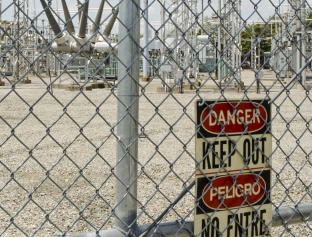To keep temperatures and sea level rise from ruining cities and lives, we need to rebuild our energy system. When we do this, we need to cut carbon emissions, build in savings, and strengthen energy reliability.
UCS has promoted renewable energy as a mitigation strategy to reduce CO2 emissions, and also heightened awareness and planning needs for climate impacts on the built environment. Electricity generation with renewable energy is a well-known and growing means to meet the vital goal of lowering CO2 emissions. Changes are needed everywhere. Here in New England, we have an over-reliance on natural gas (methane) for fueling electric power, so there is a clear need that planning for our grid must focus on renewable energy.
Rebuild the energy sector?
The Northeast has excellent wind resources, but objections to the construction of wind farms and the transmission that connects us to wind resource has delayed this solution. This keeps us in the fossil-fuel age and blocks our hopes of meeting serious reductions in greenhouse gas emissions. The famous case in this region surrounds the Cape Wind project offshore of Massachusetts, but too many other wind projects have been delayed or cancelled because of objections that the landscape would be changed by the arrival of renewable energy.
The financial community sees this coming
Recent reports by Lazard, Deutsche Bank, Ernst & Young, and Bloomberg New Energy Finance make broad analyses of the financial advantages of wind and solar over conventional power supplies.
Massachusetts, a leading state in climate policy, has set a reduction goal of 25% emissions reduction from 1990 levels by 2020 in the Global Warming Solutions Act and an 80% reduction by 2050.
Burning more natural gas won’t get us there. States need to shift their energy choices to renewables, and reinvigorate their energy efficiency efforts. UCS analysis and recommendations call for reducing power plant emissions by 50% by increasing renewable energy from 6% to 25% nationwide, and by increasing efficiency to displace 10% of energy use.
But what does this mean?
To bring New England to 20% wind, we need a 12-fold increase in wind farm capacity, or a bit less using more productive offshore wind. Grid operator ISO-New England studied wind energy levels of 20% and 24%, and found small, manageable operating impacts. But understand, this is 10,000 MW of wind farms spread around the region (up from 837 MW now), and new transmission lines to replace fossil-fuel burning in every New England state.
We love solar, too
Solar can be another piece of the puzzle. But replacing fossil-fuel plants with solar alone won’t do this. Peak demand in summer presently occurs when solar production is partially reduced by the setting sun, and in winter, demand peaks after sunset.
There are needed and beneficial reforms that states and utilities can make for solar as well. UCS put solar electric generation on our building Cambridge in 1996 and recently published analyses and summaries of the current state of solar power. To improve both grid reliability and lower costs for everyone, we point to the Clean Energy States Alliance recent guide to effective state promotion of rooftop solar, and good sense grid practices waiting for reforms of the standards (IEEE 1547) that limit the functions of solar inverters. ISO-New England and PJM have efforts to make solar inverter capability, already designed and built-in, available for greater grid reliability.
What do we expect from planners and builders?
Climate change means there will be no business as usual. We can take actions to change course, building to use less fossil fuel and sustain society in a harsher climate; or we can see accelerating climate impacts, from droughts to floods.
We expect planners and builders to pursue designs that reduce energy needs. Home builders can include “stretch code” levels of insulation, and solar panels on the roof. Wind and solar companies will have plenty of work and should take care with details to make their projects safe and acceptable. Speed is critical, but deliberate efforts to reduce visual impacts and manage construction cannot be skipped.
Given the need for new electric transmission, we expect development companies and ISOs to make decisions with more sensitivity and broader perspective than has often been used. To help ensure communities and citizens will show a willingness to host new electric transmission, additional criteria for planning should include:
- Improve the resilience of the grid
- Quicker implementation than we have seen in past
- Minimize community and environmental impacts
- Increase power grid flexibility and accommodate fossil-fired generator retirements
- Lowest lifecycle costs to ratepayers, including costs caused by construction
What should we expect from decision-makers and ourselves?
Individual communities need to be thinking globally and acting locally on energy. There’s need for more efficiency, more solar, and much more open minds in the consideration of wind projects. State regulators and consumers need to find supportable utility company business models in an economy with higher efficiency, active demand-response, and higher use of renewables.
Support for new transmission is part of the deal.
We know that widespread adoption of wind, solar, and energy efficiency can make the difference between a sustainable energy future and an unsustainable future that harms every community. Rebuilding the energy system with greatly reduced CO2 emission requires we change our thinking, our criteria, and our decisions.


